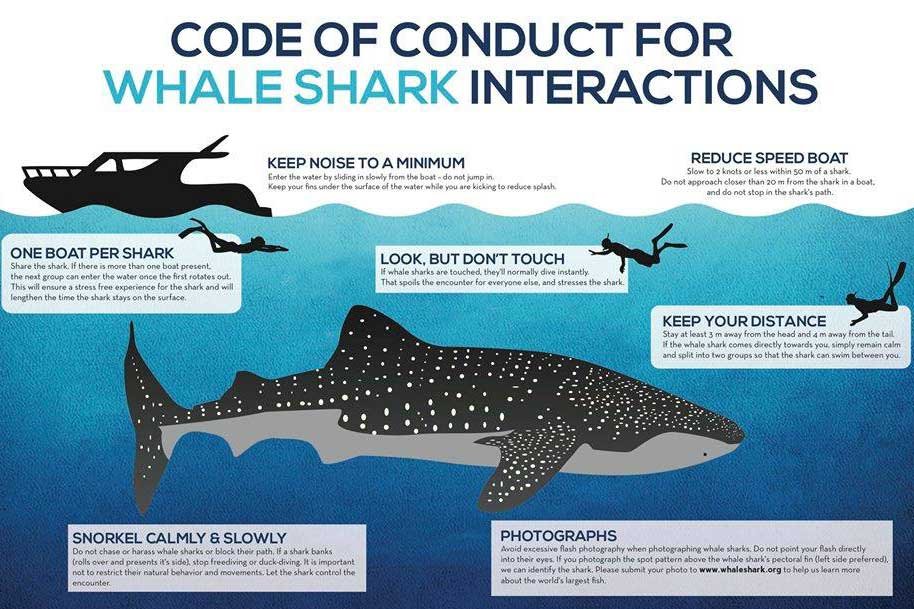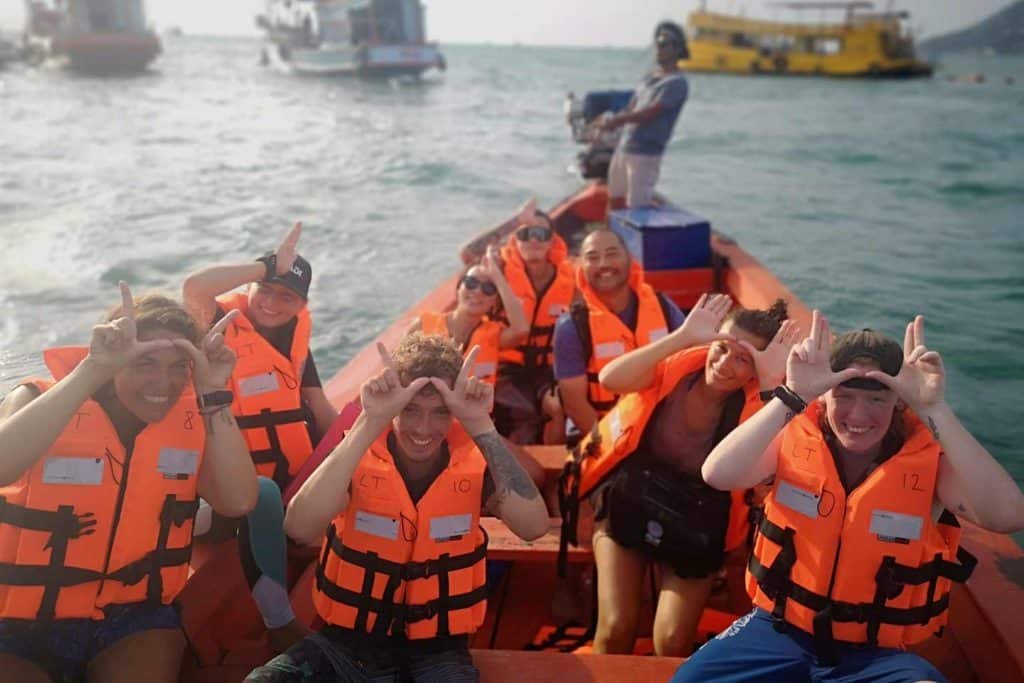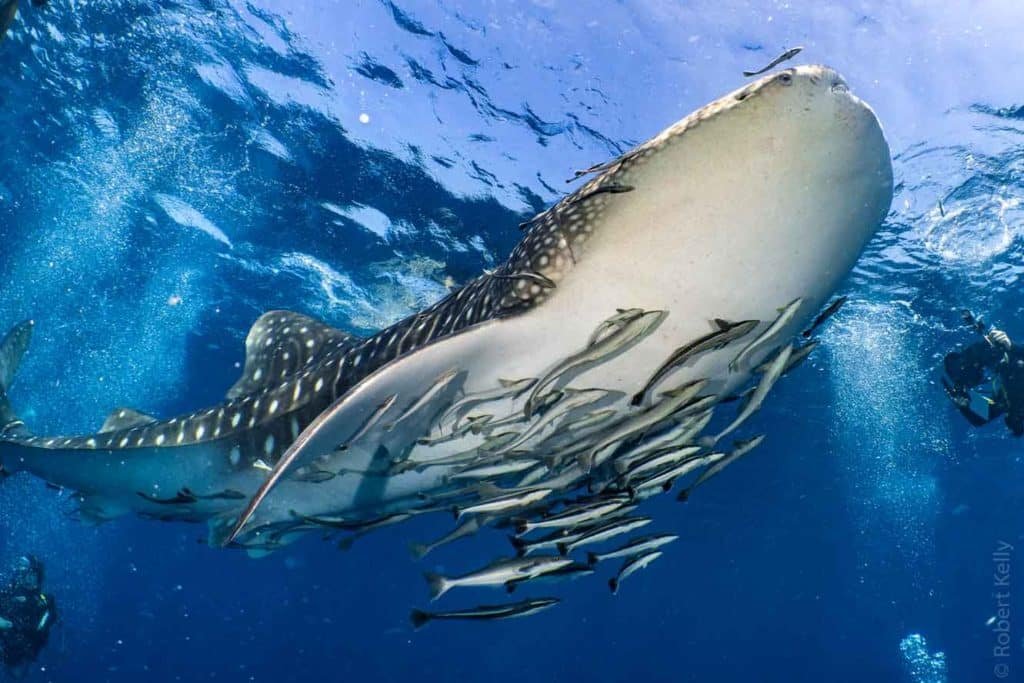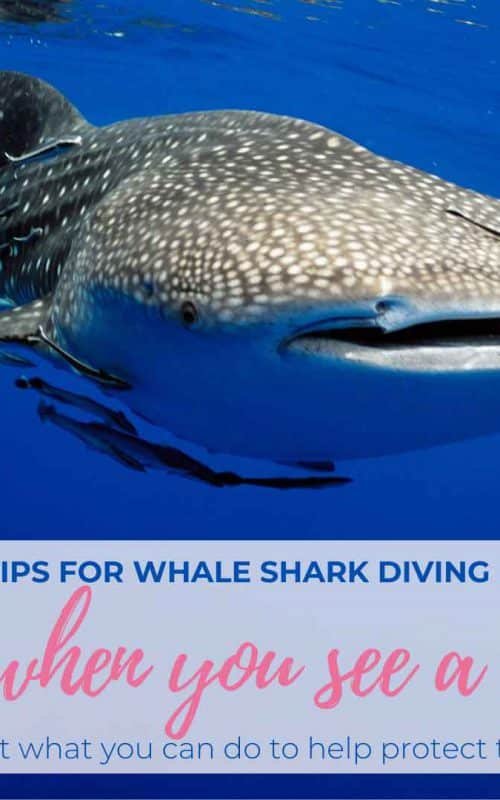To be able to see a whale shark in the natural environment is at the top of many divers’ bucket lists. On Koh Tao we are lucky enough to occasionally get the chance to see these majestic creatures in the wild. There is a lot of talk of when is the best time of year to see whale sharks. However when people talk of “whale shark seasons” it is normally referring to locations on the migratory route of the fish, or in a location particularly rich in krill which will attract whale shark in numbers to feed. So in that instance it can be possible to predict, at least to some extent, when and where are the best chances to see them.
Whale shark etiquette
If you look at a map, you will easily see why Koh Tao is not on any whale shark migration route. We don’t have krill blooms either. We are just inside the mouth of a vast, shallow gulf that ends at Bangkok. As we don’t have a whale shark season as such, it’s very much about being lucky enough to be in the right place at the right time. Whale sharks are an endangered species with currently decreasing numbers, so it is still very rare to see them. For some diving on Koh Tao, this means the possibility of a whale shark sighting on the 3rd dive of their PADI Open Water Diver course. For other this means well over 1,000 dives here, dozens of almost sightings (shark left before the boat got there, or dive sites got changed at the last minute for scheduling reasons when there was a whale shark at the original planned site) before finally getting the chance to see one. Trust us, even if you end up being in the latter group, it’s we’ll worth the wait and possibly your appreciation of the moment is greater as the anticipation has been so long.
Let’s imagine for a moment that you are lucky enough to see a whale shark while you are diving, be on Koh Tao or any other location. What should you do? How should you act? What should you definitely not do? Here’s our top tips on what to do if you see a whale shark?
Stop, breathe, think, act!
This is the golden rule for when anything happens underwater. Stop, and make sure your breathing is normal is the most important thing. These fish are HUGE. We are talking about minimum 2 meters in length, and measuring anything up to 12 meters. Most commonly the fish around Koh Tao are about 3-6 meters long. (Our visitors are actually normally mostly baby and teenage whalesharks, so cute!)
It is very likely that the first thing that happens when you see something that big, and know it’s also a rare whale shark, is you get excited and you start breathing more rapidly. As soon as this happens there can be other knock on issues such as with buoyancy control. Once your breathing is under control, you can then think about what you need to do, before finally acting.
Code of conduct
The first things to remember is the whale shark code of conduct. This lays down some simple rules about what to do and not to do when you see one.

- Keep your distance – This means at least 3 meters away from the head and at least 4 meters away from the tail at all times. Whale sharks can weight up to 20 tons and their tails are solid muscle. One gentle flick from the tail of a whale shark can cause injury to humans, so it’s in your best interest to stay out of the way. If a fish swims towards you and your group, calmly swim away. You may need to split the group to let it through.
- Look and do not touch – For the reasons we have already said above, but also for reasons that our human skin has things on it that can cause harm to whale sharks. Sun screen and body lotion can be toxic for whale sharks. Even normal human bacteria can cause problems for whale sharks and cause skin infections as the whale shark has no immunity for our strange bacteria.
- Keep an eye on your diving – Just as with a normal dive, keep checking to your buddy and make sure you know where they are. Signal to them also – the only thing better than having the experience of seeing a whale shark is sharing that experience with your buddy, so take a minute even if it’s just to wave at them. Also remember to regularly check your depth, deco limits and air supply.
- Flash photography – You should not use your camera’s flash.
Take a moment for yourself
It may sound silly, but take a second out to appreciate what you are seeing. You are in the middle of a vast ocean, enjoying a chance encounter with the biggest fish in the sea. You are swimming with an endangered species whose numbers are still in decline. If you have a camera, take a moment to watch the whale shark with just your eyes and not through your camera lens.

Take a moment to give something back to the shark
While you are fortunate enough to be enjoying your whale shark experience, you may not know that you can also give back to the species through your encounter.

Very little is known about the life of whale sharks. One of the most popular citizen science projects addressing this is the Wildbook for Whale Sharks. This project uses the unique markings along the left side of the shark (very much like a human fingerprint) to identify individuals.
Without the help of all those volunteers who snapped a quick picture, there would still only be 13 known hotspots of whale sharks. This citizen science information will help determine new areas of conservation importance, further understand their migratory routes and life history, each greatly benefitting the species.
Jordan Williams, Marine Biologist. You can read more about the importance of Citizen Science one of Jordan’s latest blog posts.
On their website you can upload your footage along with details of location and time of encounter, plus any other details you have to the project. If the individual is known already, you can help researches track the individual which can help us to learn more about the species to help protect them. If you happen to submit a new individual, you also get the added kudos of being able to name the whale shark! How cool is that?! The project welcomes more information, so even if you have old footage, as long as you know the location and date (plus time ideally) you can help the project.
Have you been lucky enough to see a whale shark before? Tell us about it!
Video and image credits: Billy Cloud (WTC Productions), Marine Megafauna Foundation, Rob Kelly, shutterstock, private.

